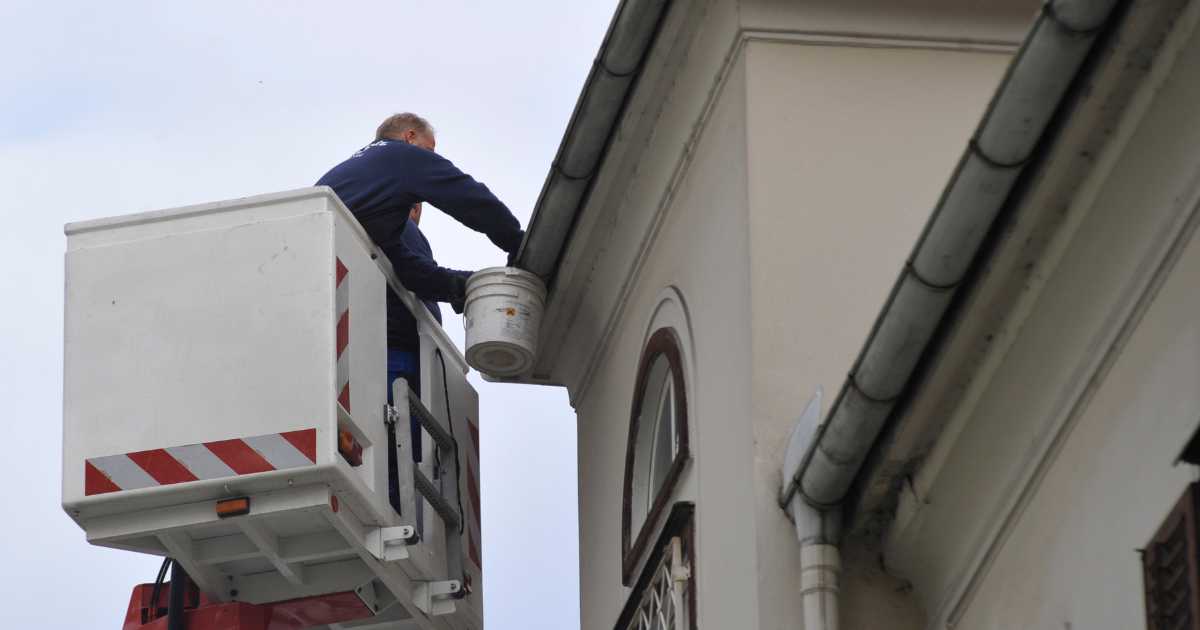Your copper roof does not need so much maintenance, and when necessary, some sweeping and periodic scrubbing will do. Dirt, debris, and grime accumulate on the roof, coupled with moisture, making everything stick to the metal. However, this is very easy to eliminate.
A dirty roof may also be why your roof does not form a patina evenly. When leaves and dust cover some areas, it will take more time to patina if it does not come in contact with moist air as much as the exposed areas. This will make star-shaped blotches and missed spots appear on the roof, giving it an uneven color throughout.
In this guide, you’ll learn how to clean a copper roof in easy steps, how often you should do so, and safety precautions to note. Let’s go!
Safety Precautions During Cleaning
When cleaning the roof, you must prioritize your safety and balance to prevent accidents. The first thing to consider is the kind of shoes to wear.
Ensure your shoes have a good grip and will prevent you from slipping. Athletic shoes work best for roof work, and some brands create shoes with a special padding on the sole for this purpose.
A harness belt will also give you extra protection if a slip occurs. Take your time to review the user manual to see how to put on the harness correctly.
Also, choose a cool, dry, and moderately sunny day to clean your roof. Never clean your roof when it is raining, snowing, or very sunny because the metal will be slippery or too hot.
How to Clean a Copper Roof – 4 Easy Steps
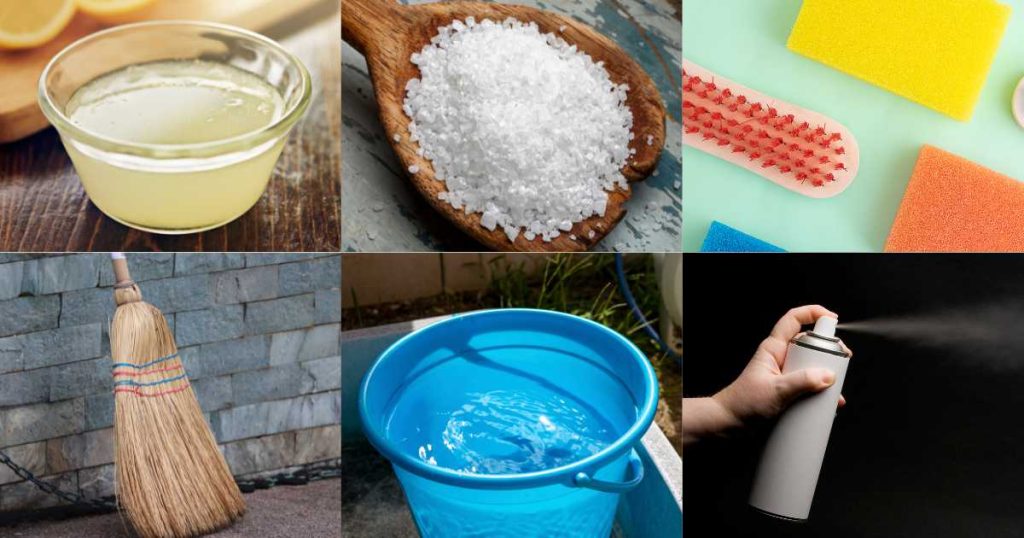
For a proper roof wash, you would need the following items:
- Three parts lemon juice
- One part coarse salt
- Scrubbing brush
- Broom
- Water
- Polyurethane spray
Step One
Mix the lemon juice and coarse salt and set aside. If you intend to scrub a large portion or the whole roof, you need to make more of the mixture in the same ratio.
Step Two
Use a push broom to sweep off the leaves, sand, and dirt on the roof. Start from the ridge of the room and then down. It’s essential to do this before scrubbing, so it does not turn out messy.
You may come across bird poop, gunk, and dirt that are dried and stuck to the roof, making it harder for the soft broom bristles to remove – in this case, a spatula should do the trick. Also, to prevent new dirt from forming on the roof, you can trim branches near the roof in this step.
Step Three
Get the cleaning mix and scrub the roof with a brush or broom. The lemon juice helps maintain the shine and brightens the color, while the coarse salt retains the patina. Both cleaning agents are effective in removing grime on the roof. Proceed to rinse off the roof with a garden hose for quicker, more effective cleaning.
Step Four
Allow the roof air for about thirty minutes and coat it with polyurethane spray to keep it clean for a more extended period and preserve the patina effect.
Alternative Cleaning Methods
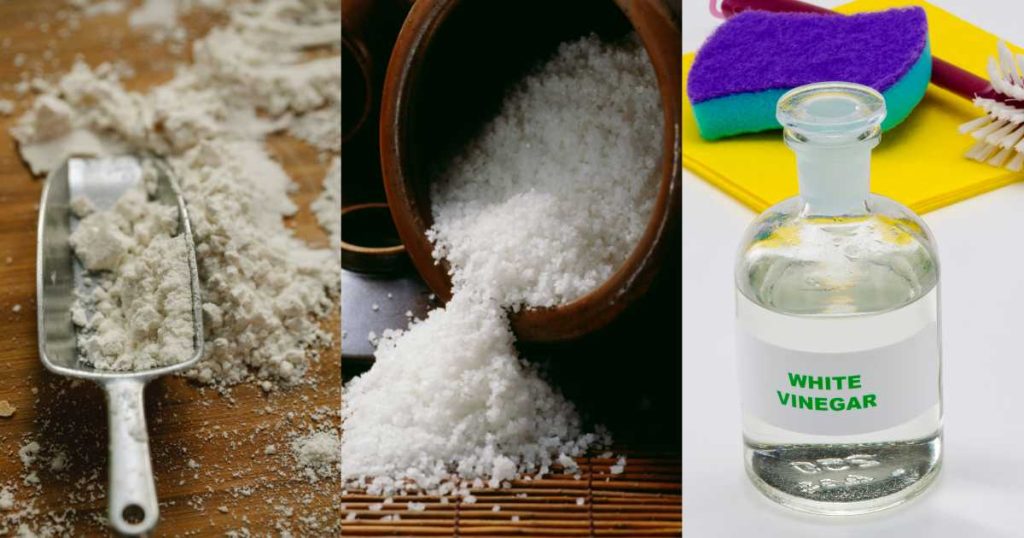
Aside from salt and lemon juice, other cleaning agents do the job just as effectively – for example, a mixture of flour, salt, and white vinegar.
The white vinegar’s acidic nature is potent for removing stubborn stains on the roof. It will also restore the roof’s original color, so if you want to remove the patina, this cleaning method is best for you.
Step One
Mix five cups of white flour and two tablespoons of salt. Then add a gallon of distilled white vinegar to the dry mixture and combine thoroughly. It’s best to use a wooden stick to stir it effectively.
Step Two
Once the mixture becomes thick, similar to the consistency of toothpaste, smear it on the roof, ensuring it coats well. If the paste is too thick to smear, add more vinegar until you get a suitable consistency.
Step Three
Leave the evenly coated paste on the roof for about fifteen to twenty minutes. While the paste dries, the vinegar works to remove the old patina and reveals the brilliant copper hue.
Step Four
Use a scrubbing brush or a wet sponge to get the dried paste off the roof. Scrub in a constant circular motion to prevent marks. Then rinse it off entirely with distilled water. After rinsing the roof, use a clean absorbent rag to soak up the water and leave it to dry.
Why Does Patina Form on My Roof?
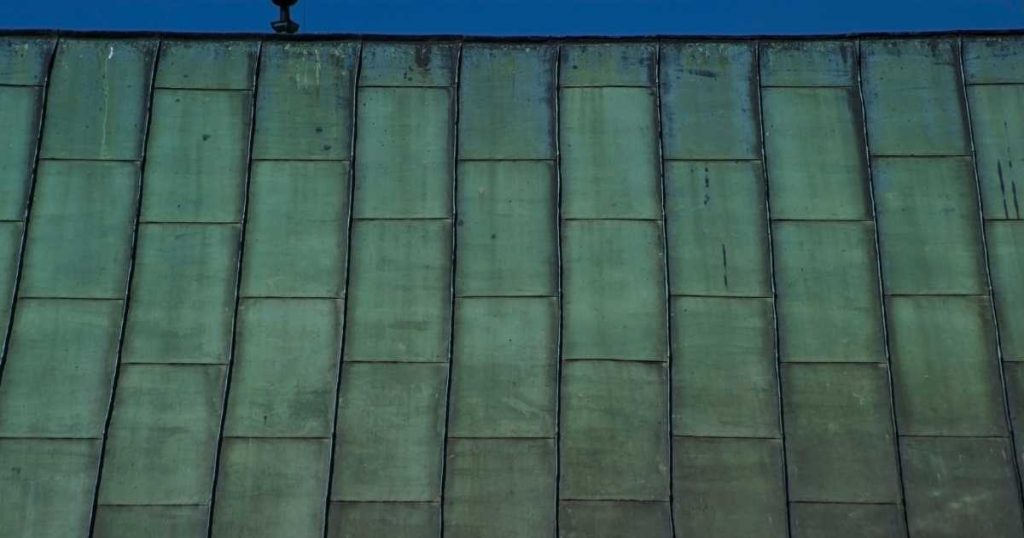
You might be interested to know how and why patina forms on your roof, especially how something brownish red turns green over time. The color change results from oxidation when copper often comes in contact with moisture or damp air. Copper oxides are formed, and the electrons from the copper metal move to oxygen on exposure to air.
The good thing is patina formation does not affect the quality or durability of your roof. The initial layer of patina formed will prevent further rapid oxidation – more like a protective layer. However, some people would prefer to keep the original color of their roof – if this is you, you can refer to a previous part of this article showing you how to clean your roof to keep its original hue.
How Can I Prevent the Patina From Forming?
It may be inconvenient to clean your roof regularly to prevent patina formation. Also, doing the scrub is not sustainable in the long run if you have a huge roof. There is an easier, long-lasting method you can apply to prevent oxidation from ravaging your roofing.
The best way to keep the initial color of your roof is to counter the chemical reaction that causes patina to form. This is usually done by coating the roof, although it does not guarantee that patina will not form or show up in some areas.
Roof Coating Steps
Here are the simple steps to coating your roof, but before that, note the safety measures you need to put in place;
- Wear comfortable shoes with good grip, preferably athletic shoes.
- Avoid exposing sensitive parts of your skin – wear overalls to prevent sweat and oil from dripping onto the roof of your skin. The oils may interact with the coat and weaken its potency.
- Use a safety harness correctly by following the instructions in the manufacturer’s manual.
- Only get on the roof on a cool, bright day. Rainy or scorching days are dangerous because you are more prone to slips and burns from the hot metal.
Step One
Clean dirt, leaves, and debris off the roof with a soft broom, then use a scrapper or flat-edge instrument to scrape off stubborn dried dirt like bird poop, tree sap, and the like.
Step Two
Since oils are counterproductive to the process, remove any spill on the roof by cleaning them thoroughly with a solvent cleaner like denatured alcohol or xylene.
Step Three
When you have a clean roof, it’s time to apply a clear coat on it. Most clear coats come in spray cans, which you can spray generously on every part of the roof. However, if yours comes in a container, you need to apply it on the roof using a clean painting brush.
How Often Should I Clean My Roof?
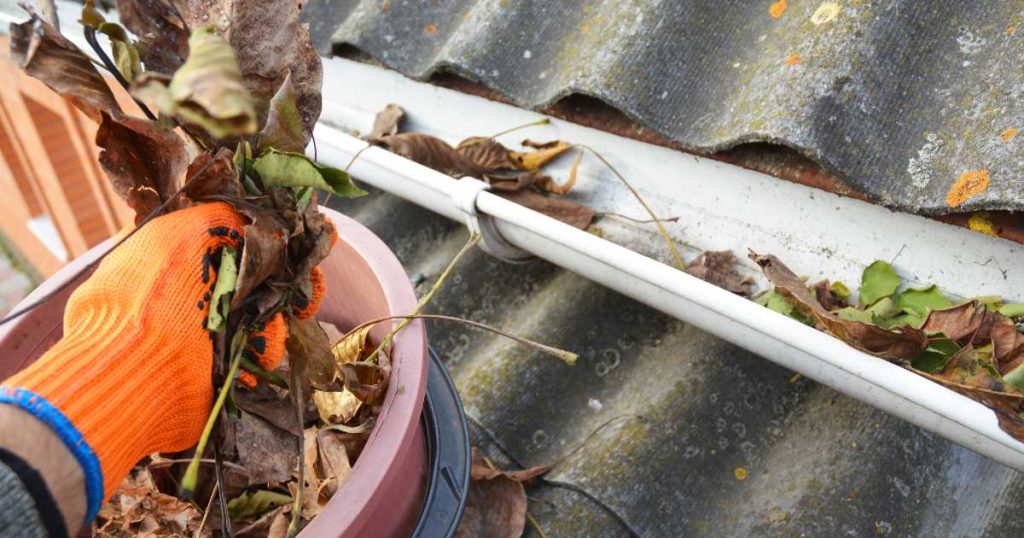
The frequency depends on factors like environment, weather, roof age, and lighting. On average, you should thoroughly wash every two to five years. However, other roof components, like gutters, should be cleaned out at least twice a year, preferably in spring and autumn.
How Often Should I Coat My Roof?
One coating cannot protect the roof from oxidation for too long and needs to be reapplied. Depending on the environmental conditions like weather, climate, and humidity, the clear coating needs to be reapplied a few years apart. It would require more frequent applications compared to dry areas in a location where it rains a lot.
Conclusion
Having read this guide, you should know how to clean a copper roof now. The low-maintenance nature of copper roofing makes the price worth it, but you cannot stop dirt from gathering on it over the years. Taking your time to clean and maintain your roof with the correct cleaning agents and steps explained in this article will help it last longer and improve the aesthetic of your house’s exterior.
Avoid using detergents, harsh chemicals, and scraping too hard, so you do not leave marks on your roof. Asides from general cleaning, if you live in a very hot climate, prioritize frequent maintenance checks from your professional roofing contractor. This will help to detect any dent due to the expansion and contraction of the metal in high temperatures.
